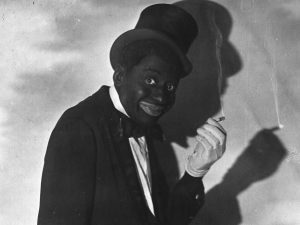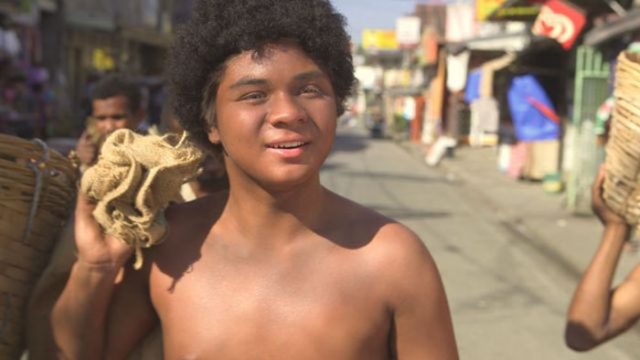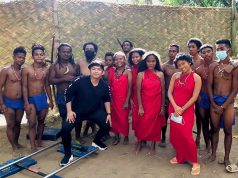MANILA, Philippines — The March 24 episode of “Maaalala Mo Kaya”, ABS-CBN’s biographical drama anthology, featuring the life story of Aeta Norman King ranged from praise to vitriol.
Proponents of the episode have lauded it for shedding light on the plight of the Aeta. Its detractors have slammed its use of blackface—the application of facial cosmetics to change the skin tone of actors to a darker color—while some have claimed inaccuracy, accusing the show of presenting a manufactured narrative of the struggles of Roman, Norman’s father.
For these detractors, Roman isn’t the benevolent pioneer of Aeta rights as he was depicted to be.
is that,,, blackface??? in the year of our lord 2018??? other than the erasure of how roman king sold his people’s ancestral lands, y’all couldn’t even get an aeta actor to tell this story? sobrang performative ng “equal rights” niyo kung ganto lang pinapahayag nyo https://t.co/rGBMJIP7NB
— ?????? | THE EVIL IS DEFEATED!! x2 (@thranduilien) March 24, 2018
The violent reaction to MMK’s blackface is not the first to rock primetime television this year.
When matinee idols Liza Soberano and Enrique Gil were cast to play pre-colonial Filipinos in ‘Bagani,’ the ensuing uproar brought in historical and educational authorities into the fray.
When the popular love team, famous for their Caucasian features, were lathered in bronze facial paint so they could play the lead roles of Malakas and Maganda, everyone and anyone had a say.
On the defense
Norman King, portrayed by an actor in blackface, related how he first checked with the indigenous group before non-Aeta actors were cast in “Equal Rights” and lathered in blackface.
King said in a previous interview that he consented to the use of blackface, saying that representing the collective experience of the Aeta was what was important.
This has been echoed by many viewers, who praise the series for choosing to shed light on the plight of indigenous people.
Im not gonna focus on the issue of ABS-CBN using ‘black face’ on tonight’s MMK Episode cause i’m gonna focus on the issue in the story itself, and its about Indigenous People’s right that is rarely a topic on mainstream media #MMKEqualRights
— Pia (@piaxcastro) March 24, 2018
In fairness, pang-ilang pa-woke ka nang sumagot ng “i-Google mo na lang.” AHAHAHAHA.
Hay. Akala ko pa naman, mga smartass kayo. Anyare? Bakit waley maitapal sa pagmumukha namin na blackface is offensive? Kasi, ang lumalabas sa Google, puro about minstrelsy no??#MMKEqualRights https://t.co/AURjSvk7Xl
— Keneth Quinto (@kenitoquinto) March 24, 2018
Alfonso Alex C. Labrague, Jr., an instructor at the Samar State University was one of those who took to Twitter to air out his opposition to the use of blackface and brownface by ABS-CBN.
One thing’s certain: kayang bastusin ng ABS-CBN ang mga katutubong kultura lahat para sa mataas na ratings. pic.twitter.com/qtPw6okBNk
— fifironi pizza ? (@AlfonsoLabrague) March 25, 2018
Labrague, in an interview with Interaksyon, said that the transplanting of blackface into the Philippines for a media portrayal of an indigenous people was an act of cultural appropriation.
He also questions why the network chose not to cast actors of dark skin color or actual Aeta when they were free to do so.
Labrague, despite his opposition to the show’s use of blackface, agrees with King in that representing the Aeta’s collective experience is important.
He however qualifies his concurrence by agreeing that the Aeta’s consent came from the lack of avenues of representation, rather than pure self-determination.
Asked whether he thinks people who defended the show were ignorant of the serious racial implications attached to blackface, Labrague thinks that such audiences have been misguided, evidenced by the premium placed on the entertainment aspect of media representation rather than its message.
“In this era, I doubt people are still ignorant of the facts,” said Labrague.
“This is a problem because it normalizes everything. You say such shows are not reflective of the issues raised. However, this would only disregard the fact that the cultures are further minoritized and that ascent to this development only allows the minoritization to persist,” he added.
The problem with ‘blackface’ and ‘brownface’
The use of blackface can be traced to 19th century America, where minstrel shows featured Caucasian actors and performers whose faces were lathered with substances such as burnt cork on cocoa batter and grease paint.
These performances featured caricatures of African-American stereotypes—individuals in shabby clothing who spoke in slurred, stooping accents and crude dialects, slow of thinking and rendered miserable on account of their poverty.

David Leonard of the Washington State University in a Huffington Post essay in 2012 decried its usage, reacting to news of an assistant district attorney in Brooklyn donning blackface for a Halloween pictorial.
According to Leonard, its use essentially comes from a position of privilege and power.
“From lynchings to mass incarceration, whites have utilized blackface (and the resulting dehumanization) as part of its moral and legal justification for violence. It is time to stop with the dismissive arguments those that describe these offensive acts as pranks, ignorance and youthful indiscretions,” he said in his essay.

Hollywood is replete with problematized blackfaced castings.
In 2013, the casting of Dominican Zoe Saldana in ”Nina”, a biopic of singer Nina Simone, received much backlash when Saldana wore a prosthetic nose and dark face paint so as to better resemble the features of the late African-American music legend.
The distributor of the film and founder of the multimillion Black Entertainment Television , Robert L Johnson spoke out against critics and claimed their criticism was outdated.
The casting was also defended by African-American artists.
In 2008, actor Robert Downey Jr. received an Academy Award nomination for his performance in the film Tropic Thunder, where he played an eccentric Caucasian method actor who donned blackface and stayed in-character even after shooting.
While his performance received much praise and understanding from African Americans, who interpreted the performance as a criticism of those who employ the practice in real life, some have the leniency given to the film by both media critics and the African-American community.
But blackface is not the least of Hollywood’s problems regarding issues on skin color.
In the recent years, several large productions have received criticism for ‘whitewashing.’
Among these is the 2016 American adaptation of Japanese science fiction manga classic Ghost in the Shell, which cast Caucasian actress Scarlet Johansson as Japanese operative Motoko Kusanagi, and the 2017 Netflix adaptation of Death Note, another manga and anime classic.
Dolores Tierrney, a senior lecturer of film studies at the University of Sussex traced the earliest examples of whitewashing in the appearances of Caucasian actors Mickey Rooney as a Japanese source of comic relief in Breakfast at Tiffany’s and John Wayne’s casting as Genghis Khan in The Conqueror. Both films are cited as Hollywood classic.
Tierrney posists in her essay published by The Independent that whitewashing exists because it was seen as the “norm.”
“Look no further than John Wayne’s impassive acting style in almost every film he appears in,” writes Tierrney.
“We also see the assumption of whiteness as the norm in the idea that a white actor can play any character by simply “being” themselves or – if they are cast as a character of color – by putting on an accent, makeup and other ethnically defining attributes and performance styles.”
Blackface in Asia
Earlier in 2018, a new year skit from Chinese television giant CCTV was criticized for including an actress in blackface, with accompanying traditional African garments and prosthetic buttocks, backup tribal dancers, and monkey props.
Chinese authorities have countered that the criticism from Western media was an attempt at undermining relations between China and African nations.
In an article titled “Getting to grips with blackface – the challenge for Asia’s marketers” posted on Mumbrella Asia, author Eleanor Dickson enumerated a series of advertisements which featured actors covered in blackface.
The ads—all produced in Asian nations—included a commercial featuring an actress in blackface consuming a chocolate doughnut and a young lady realizing that the reason for her life’s hardship was her dark skin.
Normalization of the controversial practice, already the subject of much criticism from both academic and cultural authorities in the West, has also been documented in the land down under, Australia.

Professor Marion Gray of the University of Sunshine Coast writing in an article titled “Explainer: why blackface and brownface offend” published on the Australian edition of The Conversation in 2016 documented incidents of blackface and brownface in the country.
She spoke about protests against Disney for promoting its animated featured Moana for publicizing a tattooed full-body children’s costume based on Maui—the film’s central character and a deity to the Polynesian people.
She also noted other instances of ‘brownface’: a basketball player taking a selfie of her blackface and a local Caucasian mother dressing her child to resemble a football player of Fijian descent.
“The dominant (white) culture has, for so long, taken things from people of color – whether it be stories or treasures – because it could.
In the case of the Maui outfit, for instance, culturally significant tattoos have a very specific meaning,” mulls Gray in her essay.
She cited how Marama Fox, leader of the Maori Party in New Zealand accused Disney of trying to profit off another culture.
“The history of blackface has shown us that, regardless of intent, this practice cannot be seen as respectful and will offend people.”
“Equal Rights” and “Bagani” are just the most recent media products to revive the debate on the ethics of blackface.
In 2011, GMA TV aired “Nita Negrita,” which starred the fair-skinned actress Barbie Forteza as the product of the union between a Filipina woman and an African-American.
Critics hit the show not just for its use of blackface but for its failure to convey any relevant social or cultural import.










